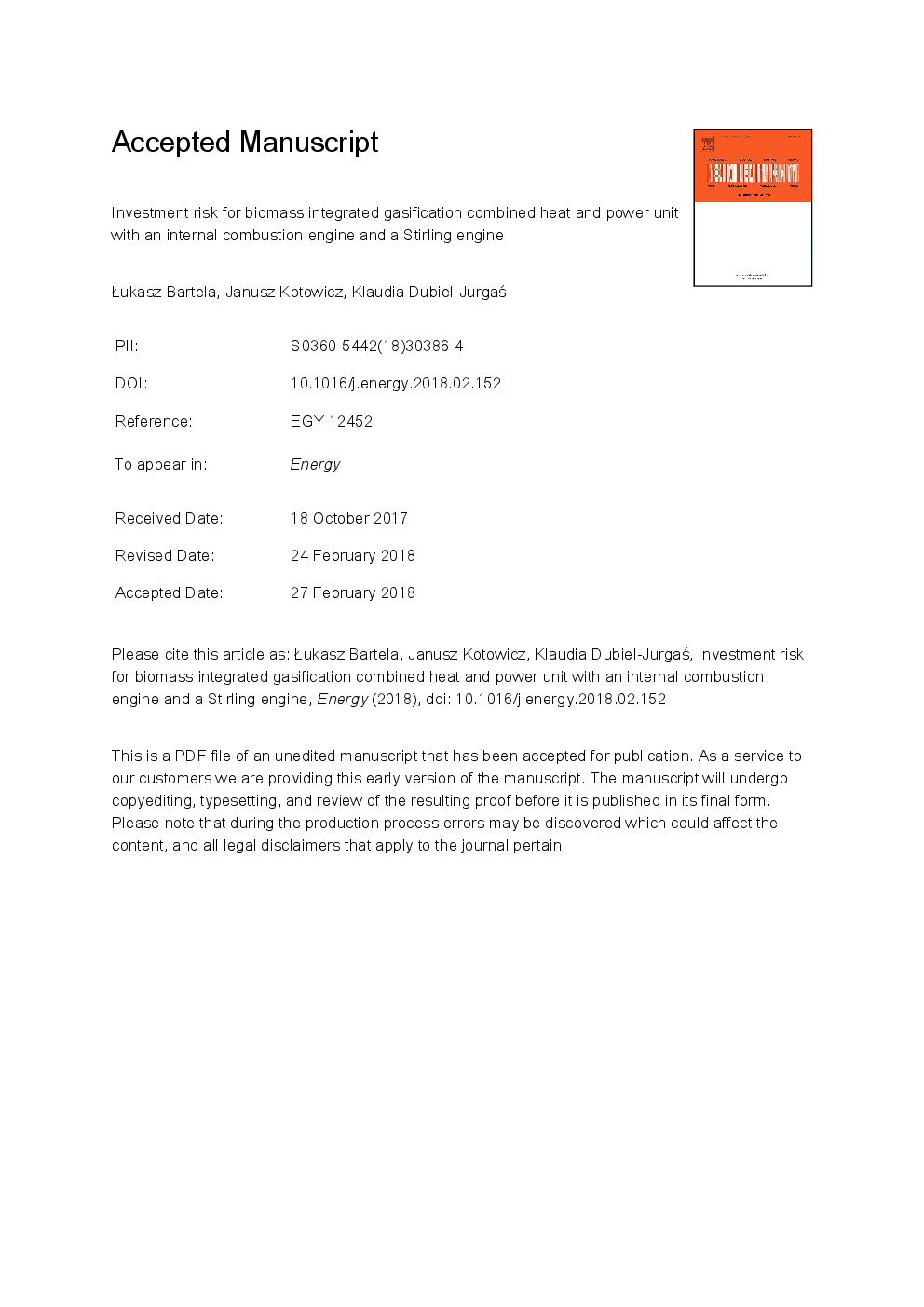ترجمه فارسی عنوان مقاله
ریسک سرمایه گذاری برای ترکیب زغال سنگ مجتمع گاز و گرما و نیروگاه با موتور احتراق داخلی و یک موتور استرلینگ
عنوان انگلیسی
Investment risk for biomass integrated gasification combined heat and power unit with an internal combustion engine and a Stirling engine
| کد مقاله | سال انتشار | تعداد صفحات مقاله انگلیسی |
|---|---|---|
| 161129 | 2018 | 40 صفحه PDF |
منبع

Publisher : Elsevier - Science Direct (الزویر - ساینس دایرکت)
Journal : Energy, Volume 150, 1 May 2018, Pages 601-616
ترجمه کلمات کلیدی
گاز زیست توده زیست توده، ترکیب گرما و قدرت، موتور استرلینگ، تحلیل ریسک،
کلمات کلیدی انگلیسی
Waste biomass gasification; Combined heat and power; Stirling engine; Risk analysis;
ترجمه چکیده
در مقاله، نتایج حاصل از تجزیه و تحلیل ادغام یک موتور استرلینگ با یک سیستم گرما و نیروی ترکیبی گازسیستم مجتمع سوخت زیستی ارائه شده است. تجزیه و تحلیل ها برای دو سیستم انجام شد: با موتور استرلینگ و بدون آن. اولویت سیستم قدرت استفاده از بیوماس زباله است. علاوه بر این، این سیستم تولید برق و حرارت را برای شبکه گرمایش مرکزی شهرداری می کند. موتور استرلینگ با استفاده از پتانسیل دما بالا از فرایند خام تولید می کند. استفاده از یک موتور اضافی در سیستم همگنی، تولید برق را افزایش داد. محاسبات برای درجه های مختلف خنک کننده موتور در موتور استرلینگ انجام شد. جریان انرژی پایه در سیستم و شاخص های ارزیابی ترمودینامیکی تعیین می شود. در مرحله بعد، برای ارزیابی شاخص های اقتصادی، محاسبات انجام شد. تجزیه و تحلیل ریسک با استفاده از روش مونت کارلو انجام شد. سپس عوامل اصلی فاکتورهای فنی و اقتصادی مربوط به اجرای تکنولوژی همگن سازی شناسایی شدند. بر اساس منحنی های احتمالی انباشت شده تعیین شده برای به دست آوردن مقادیر مشخصی از نسبت ارزش فعلی خالص، ارزش شاخص های تعریف شده از ارزیابی ریسک سرمایه گذاری می تواند بدست آید.

